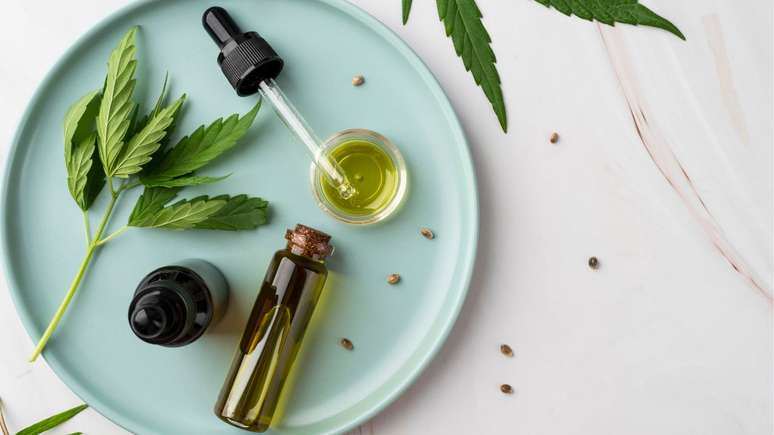Even with the significant increase in the use of medical cannabis, there are still many questions about the topic.
The consumption of cannabis products has increased significantly year after year. According to data recently released by the Brazilian Cannabinoid Industry Association (BRCANN)pharmacy sales increased by 304% last year: there were 155.8 thousand units between January and December 2022, against 38.6 thousand in 2021.
html[data-range=”xlarge”] figure image img.img-31ff057a2307cbeb194972ca6bae8027o58bingc { width: 774px; height: 435px; }HTML[data-range=”large”] figure image img.img-31ff057a2307cbeb194972ca6bae8027o58bingc { width: 548px; height: 308px; }HTML[data-range=”small”] figure image img.img-31ff057a2307cbeb194972ca6bae8027o58bingc, html[data-range=”medium”] image figure img.img-31ff057a2307cbeb194972ca6bae8027o58bingc { width: 564px; height: 317px; }
Imports are also growing: 79,995 new authorizations were requested for the importation of medicinal cannabis products, with a 99% growth compared to the numbers recorded in the previous year.
These numbers indicate a huge increase in people’s interest in cannabis medical treatment, something that is expected to continue to grow at a rapid pace. Similarly, there is also an evolution of research on the product, which has proved to be very effective in the treatment of various pathologies, signaling a significant contribution to improving the quality of life of many patients.
According to the doctor at the Clínica Gravital, Amanda Medeirosthe ever-increasing market opening for cannabis treatment is an important evolution for different types of diseases.
“The components of cannabis, called cannabinoids, have powerful medicinal potential”, explains. However, despite the many benefits, there is still a lot of misinformation or even doubts about it. Below, we clarify some of them.
After all, is cannabis the same thing as marijuana?
Cannabis sativa L. is the scientific name of marijuana. I mean, they are the same thing. However, to refer to the therapeutic application of the components extracted from the plant, the term used is medicinal cannabis.
“The cannabis sativa plant is composed of more than 500 chemical compounds, including THC and CBD, which are the most abundant and studied cannabinoids in humans. These cannabinoids have their own characteristics and specific therapeutic effects”explains the doctor of the Clínica Gravital, Andre Cavallini.
What is the difference between CBD and THC?
Cannabis has more than 100 cannabinoids already identified and found in the flowers, leaves and stem of the plant. Among these, the best known are tetrahydrocannabinol (THC) and cannabidiol (CBD).
“THC is the substance that ‘gives you a high’, but this will only happen when there is a high concentration of this substance. In medicinal use, THC is not used for this purpose and has significant benefits, as has the ability to offer relaxation, appetite increase, pain relief, etc.”Amanda explains.
Do Brazilian laws authorize the use of medical cannabis?
A Anvis authorized the therapeutic use of medical cannabis in May 2015, through RDC 17/2015. This resolution allowed the patient to import the product subject to express authorization from Anvisa and a medical prescription. Subsequently, RDC 327/2019 even regulated the sale of cannabis products in Brazilian pharmacies. But supply is still limited and expensive.
With the shortage of products in Brazil, the solution for patients is importation. Despite the simplifications, it is a process that usually takes 30 days from the date of consultation to the date of receipt of the product.
“Once the medical consultation has been made, the prescription has been received and this product has been authorized by Anvisa, you will enter the Federal Government portal, fill out the form and attach the documents, such as identification and medical prescription. If the prescriber is qualified and the documents and the data are all correct, you will receive your authorization immediately”says Dr. Amanda.
How is cannabis administered during treatment?
Oils are the most common form of medical cannabis administration, but day by day research and studies advance and new practices emerge. The composition of the oil can vary according to the concentration of cannabinoids, for example: oils with CBD isolate (pure), CBD-rich oil up to 0.3% THC, balanced oils with concentrations of mid CBD and the other half THC or even THC rich oils.
There are also oils rich in other cannabinoids and the prescription will depend on the patient’s diagnosis. In the case of imported products, there are several other forms of administration, as they are manufactured in gelatin capsules, gums, sprays, tinctures, lozenges, suppositories, creams and ointments.
“It is very important to follow a doctor when prescribing the treatment and during it to analyze the evolution of the case and discuss new forms of use and even new products with cannabinoids”says the doctor.
How does cannabis work in the body?
All humans have an endocannabinoid system. Dr. André Cavallini explains that endocannabinoids are fat-based neurotransmitters that the body produces that are responsible for a variety of bodily functions, including the modulation of inflammation, immune system function, and neurotransmitters.
“Cannabinoids found in the cannabis plant, including THC and CBD, can activate the endocannabinoid system in the body and can help with chronic pain, migraines, abdominal pain, bloating and other problems,” He says.
What are the advantages over other drugs?
Compared to conventional allopathies, medical cannabis has the advantage of having fewer side effects, as well as not having the risk of overdose or liver problems due to liver overload.
“We must understand that products created for therapeutic use are based on a series of procedures aimed at ensuring the quality of life of patients. They are natural products, which are based on safe testing processes and offer a more economically viable and healthier solution than to synthetic products”explains Dr. Amanda.
Under what conditions can medical cannabis treatment be used?
Some of them are: anorexia, anxiety, autism, cancer, chemotherapy induced nausea and vomiting, chronic pain, depression, dystonia, epilepsy, intestinal syndromes, fibromyalgia, migraine, neuropathic pain, opiate addiction, palliative care, neurodegenerative diseases, polymyalgia rheumatic arthritis, post-stroke neuropathy, PTSD, radiculopathy, rheumatoid arthritis, spasticity from neurological conditions and tremors.
“It is important to understand that medical cannabis is not a panacea or cure-all. Everything will depend on a case-by-case basis. In some situations, cannabis-based medicines are combined with conventional allopathic treatments, with the aim of improving the quality of life “concludes Amanda.
Source: Terra
Ben Stock is a lifestyle journalist and author at Gossipify. He writes about topics such as health, wellness, travel, food and home decor. He provides practical advice and inspiration to improve well-being, keeps readers up to date with latest lifestyle news and trends, known for his engaging writing style, in-depth analysis and unique perspectives.








